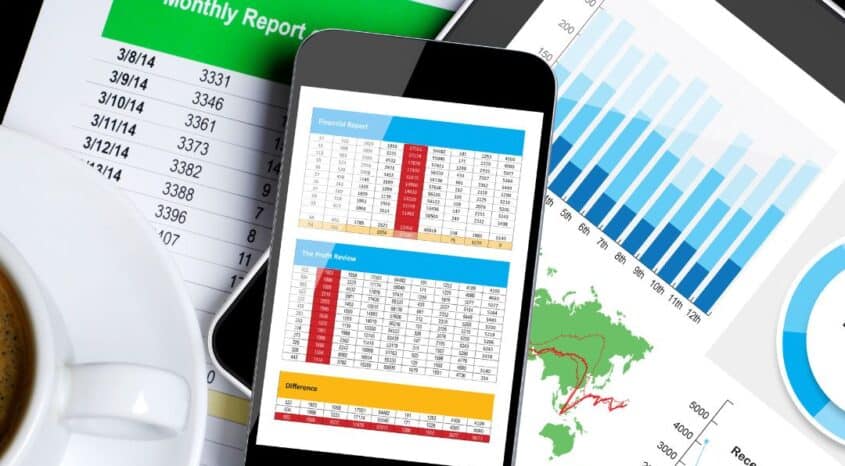From Amazon and Alibaba to Etsy and eBay, online marketplaces are going through a renaissance – re-emerging as the place to be if you’re an e-commerce business.
According to one study, the unstoppable rise of the online marketplace model is driving the largest fundamental shift in consumer spending since the first emergence of e-commerce in the 1990s.
Research also shows a shift of over $2 trillion from traditional retail, dealer, and reseller channels into marketplaces. One-third of all US business now flows through e-commerce, and 63% of that is through marketplaces.
But marketplaces aren’t a new concept – so why the recent surge in popularity?
What are the benefits of trading on marketplaces? What are the challenges – and how can merchants use technology, and other approaches, to overcome them? Keep reading to find out.
What is the marketplace business model?
Brands that adopt a marketplace business model primarily use marketplaces to connect with buyers and sell their goods or services. This can be in a B2B or B2C capacity, and can form part of a wider multichannel approach.
Typically, a marketplace business model is chosen by merchants because it is considered a low risk approach with fewer barriers to entry. Increasingly, businesses start out only selling via marketplaces, but later adopt a multichannel approach to build on initial success.
Popular marketplaces include Amazon, eBay, Etsy, Alibaba, Walmart and – for fashion brands in particular – Asos marketplace.
Why is the marketplace business model growing in popularity?
The marketplace business model is popular because it offers…
- Easy route to market. In a digital-first economy where more shoppers are using marketplaces as a first port of call, marketplaces are an attractive and easy platform from which to launch a new business because they offer instant access to vast and engaged ‘ready-made’ audiences
- Increased exposure. One of the major challenges for start-ups and smaller brands is reaching enough consumers to turn a profit; organic marketing can be challenging to get right and paid marketing is getting more expensive. Established marketplaces have millions of existing customers that already like, know and trust them. Reaching these audiences can enable merchants to scale faster than would otherwise be possible.
- Low-cost expansion. As operational costs rise for all merchants, marketplaces offer a comparatively cheap way to expand into new markets – whether that’s overseas on in new categories. The marketplace model supports low-cost logistics – it’s possible to operate round-the-clock without the issues with time constraints, staffing and international trading hours that might otherwise be faced.
- Opportunity to build trust. Marketplaces run on reviews – and selling on one offers you an opportunity to build up positive ratings and get useful feedback. Plus, easily accessible impartial reviews on marketplaces can encourage new customers to buy.
- Vital insights. The marketplace business model enables brands to gather in-app data which can help them better understand customers’ behavior and what motivates them to make purchases. This information can be used to improve overall strategy and drive repeat sales.
While there are lots of benefits of adopting a marketplace business model, it’s not all roses. There are considerable risks and challenges that every merchant considering a marketplace business model must be aware of.
What are the challenges of using a marketplace business model?
- Increased competition. Marketplaces attract a large number of sellers, which means more competition. Standing out from the crowd can be a challenge.
- Limited control over customer experience. Selling on marketplaces means relinquishing some of the control you have over customer experience – especially if you use FBA (Fulfilled by Amazon) or similar services. This means you risk your customers having a poor experience – or at the very least a non-memorable one.
- Dependency on the platform. If you start your business on marketplaces, and have only achieved success on a marketplace, it can hamper your confidence for going it alone.
- Brand dilution. It’s difficult to establish a unique brand identity when you operate on a marketplace model. Often, the biggest differentiator is price – and sometimes marketplace providers lead on via cheap own brand versions, making it even harder to get your brand noticed.
- Operational issues. Marketplace merchants often need to comply with strict service obligations set by the marketplace provider. If your business isn’t set up to be able to manage its inventory properly or to handle varying sales volumes or to expand across regions and channels, it can cause major issues. The risk of being kicked off marketplaces for failing to meet a certain level of service is very real.
- Fees and commission. Marketplaces typically charge fees or commissions. Sometimes you can be charged a percentage or fixed amount for each transaction, and sometimes you might need to pay a flat fee to use a platform. These fees might not seem significant at first, but they quickly add up and can easily reduce profit margins, especially for smaller businesses or those with lower-priced products.
How can the challenges be overcome?
- Embrace the right technology. Many of the challenges of running a marketplace business – especially the operational ones – can be overcome with the right retail operating system.
Brightpearl can enable marketplace business to simplify, streamline and automate processes. This can offset risks such as not being able to handle large sales volumes, or not being able to manage orders in a timely way.
For instance, pet brand Lords and Labradors – which trades DTC as well as via marketplaces including Amazon, eBay, Not on the High Street and Etsy – joined Brightpearl to overhaul many of its time-consuming (and tedious) manual post-purchase processes. Now, 80% of orders get processed automatically.
Alexandra Clements, Buying and Supply Chain Manager, says: “We loved that Brightpearl could streamline all our sales channels into a single ‘source of truth’.
“It meant we were able to properly get our house in order with accurate, real-time visibility for the first time ever”.
Plus, tools like Inventory Planner can enable marketplace merchants to accurately forecast demand on multiple channels, including marketplaces.
For instance, jewelry brand MAX + STONE – which primarily trades on Amazon but is growing its own webstore – uses Inventory Planner to eliminate excess stock of the wrong items and stock shortages of the right items.
E-Commerce Manager, Anushka Jain, says: “Trying to manually manage a catalog of 2,000 products across spreadsheets and deal with the supply chain issues resulted in us having a shortage of our top-selling items and too many of our less popular products that we struggled to shift.
“We tried increasing the prices of our top-sellers to slow demand, but then we were penalized by the Amazon algorithm. We slashed the price on slow-movers by 30% but that hit our profits. It was a nightmare!
“However, thanks to Inventory Planner, we’ve managed to quickly achieve a 92% in-stock rate and dramatically improved the age of our inventory sitting in Amazon’s warehouses.”
- Nail your brand identity. Clearly communicating your brand story, values, and product differentiation via content – including on your social channels, blog and your product packaging – can go a long way to counteract the brand dilution that happens when you trade on marketplaces.
- Focus on customer service. Different marketplaces offer different levels of interaction with customers. For instance, customer interaction is very limited on Amazon but encouraged on Etsy. Marketplace merchants should seize any and all opportunities to turn customer touchpoints into positive brand experiences. Go above and beyond to provide great service and deal with issues and queries promptly. It can make all the difference.
- Diversify your sales channels. Putting all your eggs in one basket is never a good idea. If you rely solely on one marketplace, and you get hit by supply issues and your algorithm rankings drop, you can suddenly be in trouble. Or, if something goes wrong and you get kicked off the one platform you rely on, you can suddenly be out of business altogether. To combat this, add in other marketplaces and diversify your sales channels, adding your own webstore and social channels into the mix.
- Build a direct customer base. To persuade marketplace customers to shop with you directly, you need to create intrigue about your brand and your products. One way to achieve this is to only list a few of your products on marketplaces – and keep some back for your own webstore.
For instance, you could sell a set or bundle on marketplaces but only sell the individual products directly. Also, although directing to your own e-commerce website is likely to violate the terms and conditions of most marketplaces, some brands include a card in their pre-packaging that, for example, connects the customer with their customer service team.
Next steps
Find out how Brightpearl can support you as a marketplace or multichannel merchant with a free demo. Book yours now.




